L'Inferno (1911) Online
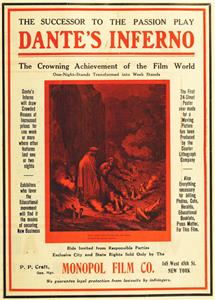
The poet Dante is lost in a dark and gloomy wood. At the summit of a mountain he sees the light of salvation. He endeavors to ascend to it, but his way is barred by three wild beasts, symbolizing Avarice, Pride and Lust. Beatrice sees his predicament and descends from Paradise into Limbo, where she asks the poet Virgil to rescue and guide Dante. Virgil knows another way to go, but this leads straight through the entire Inferno, before it continues towards Paradise. Virgil leads Dante to the portals of Inferno. Charon ferries them over the river Acheron, and then they start their journey downwards through the different circles of Inferno. Dante meets all kind of sinners and sees the never-ending punishments they have to undergo. The various punishments are adjusted to the different transgressions. Among the sinners Dante recognizes many persons he has met in Florence, when they were still alive. They tell him their sad stories and why they have ended here. At last Dante and Virgil ...
| Cast overview: | |||
| Salvatore Papa | - | Dante Alighieri | |
| Arturo Pirovano | - | Virgilio | |
| Giuseppe de Liguoro | - | Farinata degli Uberti | |
| Pier Delle Vigne | - | Il conte Ugolino | |
| Augusto Milla | - | Lucifer | |
| Attilio Motta | |||
| Emilise Beretta |
This is the first feature film to be shown in its entirety, in one screening, in the USA. Prior to this it was thought audiences wouldn't be prepared to sit for over an hour to watch a feature - films such as Les Misérables (1909) and The Life of Moses (1909) were shown in episodic parts over the course of a month or two.
In July 1911, the Monopol Film Company claimed to be the first USA film distributor to use 24-sheet billboard posters to promote a film.
According to "The People's Almanac Guide to the 20th Century", this is the very first movie to ever show male front nudity, well over half a century before it turned up again in Women in Love (1969).
Considered to be the first Italian, and oldest surviving feature-length film.
First screened in Naples, Italy at the Teatro Mercadante on March 10, 1911.
Lucifer as he appears in the ninth circle Treachery and the last obstacle before Virgillio and Dante's descent and escape from Hell is feasting upon three male corpses at once. Despite his mostly darkened human face the Devil as he appears bears two siding demonic faces with chewing mouths playing in accordance to Gustave Doré's depiction of Satan in Treachery.
The first adaptation of Dante Alighieri's Devine Comedy.
While credited as a loose rendition of Dante Alighieri's Divine Comedy Poem Inferno, the entirety of the motion picture follows every laid out sequence in his narrative.
Arguably considered the world's first blockbuster.
Regarded by many scholars the finest adaption of Dante Alighieri's works to date.
Took two years to fully complete for release.
The first feature length horror film.
An international success taking in more than $2 million in the United States.
The depictions of the nine circles visually were done in accordance to Gustave Doré's engravings and paintings portraying Dante and Virgil's journey through hell in the Divine Comedy Volume Inferno.
The men being chewed away by the three heads of the Devil in the film's climax are Brutus, Cassius and Judas Iscariot. The three are considered history's greatest traitors.
Virgillio in the original Dante's Inferno narrative is named Virgil, changed on the account of the production of the film being centrally Italian.
The three headed hound of hell overseeing the third circle of hell Gluttony is the mythological Greek monster Cerberus: who under the command of the Greek God of the Underworld Hades guards the Underworld and it's inner sanctum: Tartarus.
The first depiction in film of flight and wires: The patrolling demons of Fraud who have Virgillio and Dante briefly captured contend with a tortured soul in their circle of hello Ciampolo leap back into the boiling pitch aside them to escape them. The winged demons follow in pursuit leaping into hovering flight over the pitch.
The nine circles of hell are as follows:
1. Limbo- Where souls did not do enough goods deeds to pass into heaven and the unbaptized reside 2. Lust- Swirling, deafening wind vortex that keeps the sexually dominated unsatisfied 3. Gluttony- Muddy filth pits overseen by the three headed dog monster Cerberus 4. Greed- Cavern of spendthrifts and misers condemned to carry around bags of gold under the watch of the demon Pluto 5. Anger- The Stygian Swamp overseen by the Ferryman Phleguyas where the slothful and wrathful are immersed 6. Heresy- Field and Tombs of fires where Heretics are burning in open tombs 7. Violence- The Woods of Suicide overseen by the Harpies and souls chased through by ferocious dogs 8. Fraud- Evil ditches pertaining to Hypocrites, Thieves, Flatterers, Falsifiers and Giants. Hypocrites in long weighing down robes passing the crucified corpse of Jesus Christ's murderer, Thieves burnt and bitten by serpents in a pit, Flatters in an amphitheatre of stone are are bitten by lizards and become humanoid reptilian beasts, Falsifiers in a divided cave present their bodily mutilations and the deepest inner chamber well leading to Treachery overseen by three giants chained at individual times. 9. Treachery- The frozen lake Colyctus where people's waist above's frozen in fear in either individual holes or shared holes where they attack one another, off a dark abyss of the Lake's end is Lucifer himself, a gargantuan winded humanoid with two demonic siding heads feasting upon History's greatest traitors, he is submerged, frozen at the waist in the abyss.
The three Giants encountered at the end of Fraud that permit passage to the ninth and final circle Treachery are Nimrod, Ephialtes and Antaeus. Antaeus being the giant who picks up and places Virgillio and Dante in Treachery. Although in Dante Alighieri's original narrative of Inferno the Giants were not named as the Greek Mythology Giant Trio and all permitted passage to Treachery via the well they were all seated in.
Several Bolgia (Sections of the Malebolga Evil Ditches) that Fraud comprises of are omitted from the film for length and cost reasons. Missing sections of the circle of hell are Bolgias III, IV, V, VIII and VIIII which pertain to Simoniacs, Sorcerers, Barrators, Counsellors of Fraud and Sowers of Discord. The punishment for Sorcerers being among what was considered the most horrifying of Dante's Hell Narrative: Their heads turned around and forced to march forward into oblivion.
The later popular video game Dante's Inferno (2009) would feature King Minos in demonic visage, where as the original source material of the narrative and this first feature film features Minos in the form he had on Earth.
The man carrying his own severed head in Fraud is Bertran de Born a former baron of the Limousin of France during the early 12th Century. While his death was never recorded as any execution nor any incident relating to decapitation he is seen in Hell carrying his own cut off head as a lantern punished as a Falsifier in Hell.
The City of Dis hails from Roman Mythology as an Underworld location populated by Furies, Angels and Medusa. Here it appears as it did in Dante's original text as a division between the sixth and seventh circles of Hell: Hersey and Violence.
In place of Medusa attempting to turn Dante to stone in the City of Dis in the film it is the accompanying three furies who are stopped by the angel that opens the gate for Dante and Virgillio.
Dante Alighieri's death is not mentioned or shown in the film. Though in accordance to the original poetic narrative Dante's beloved Beatrice had been tricked by Lucifer posing as God to have promise Dante's fidelity on her soul. Dante a former poet went into battle in the crusades however was tempted by a female slave into sexual intercourss in return for her and her brother's safety. Dante was then stabbed in the back by his superior. In the film instead Beatrice ascends to Heaven and Dante goes to hell alone.
The film begins immediately with Dante and Beatrice's souls immediately after death, Beatrice in Heaven and Dante in Hell.
The film begins in the woods of Canto, the beginning path to Hell. The Tiger, Lion & She-Wolf that attack Dante and which are warded off by Virgillio were meant to bring him fear and harm while directing him into hell.
Lucifer's plans to ascend to Heaven for Dominion & Vengeance are omitted from the film.
Following the film two more motion picture adaptions would follow.



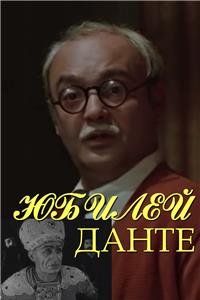
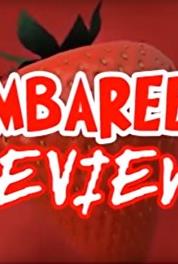
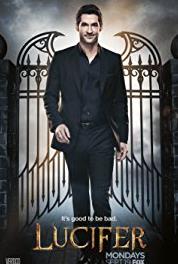

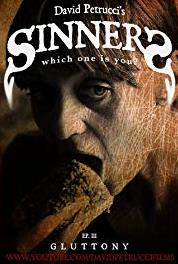
User reviews